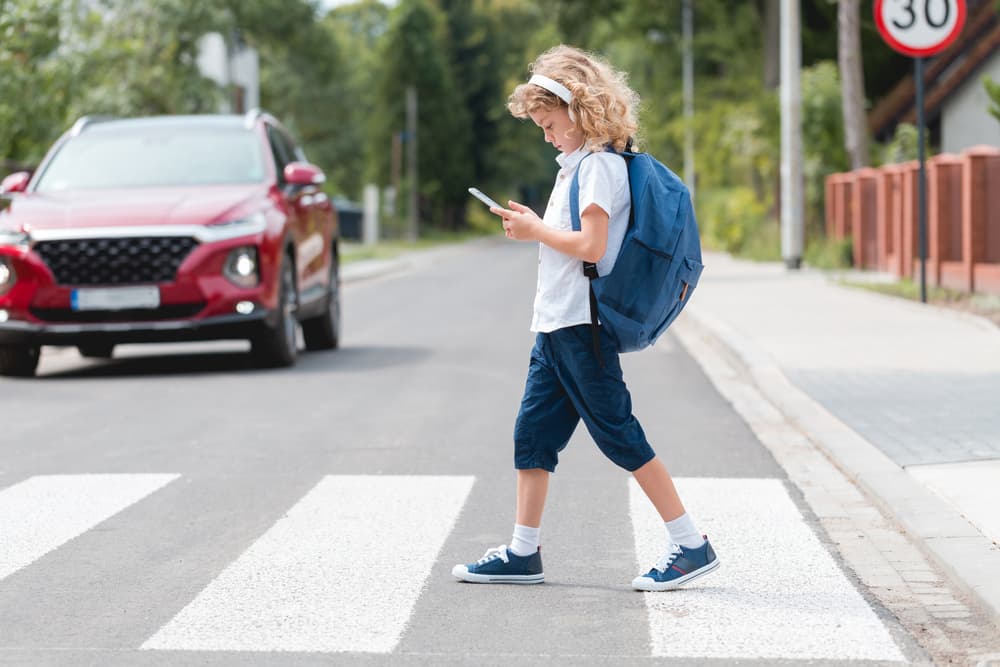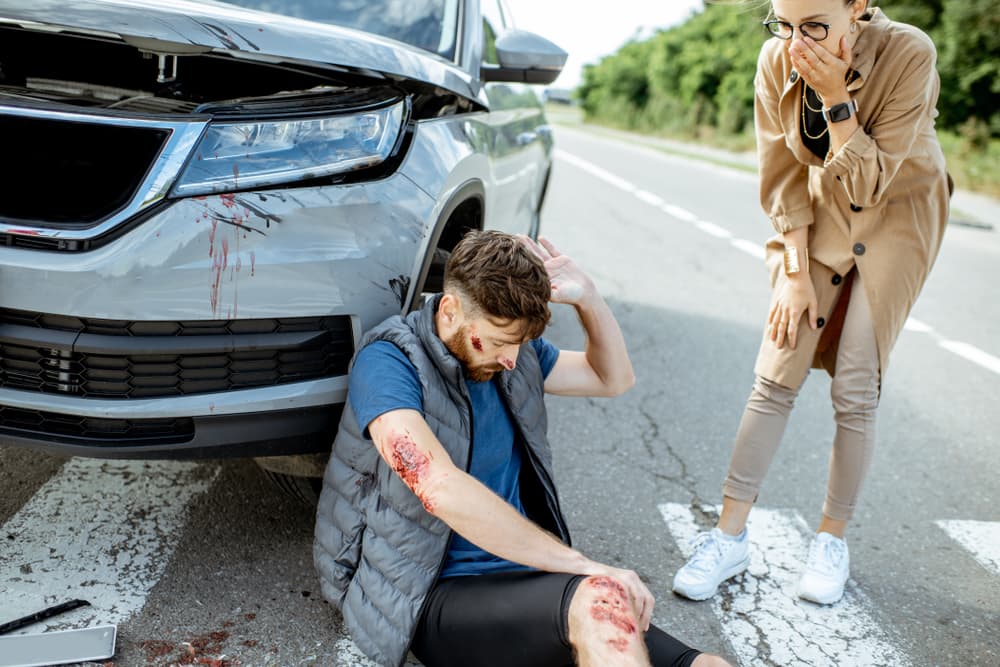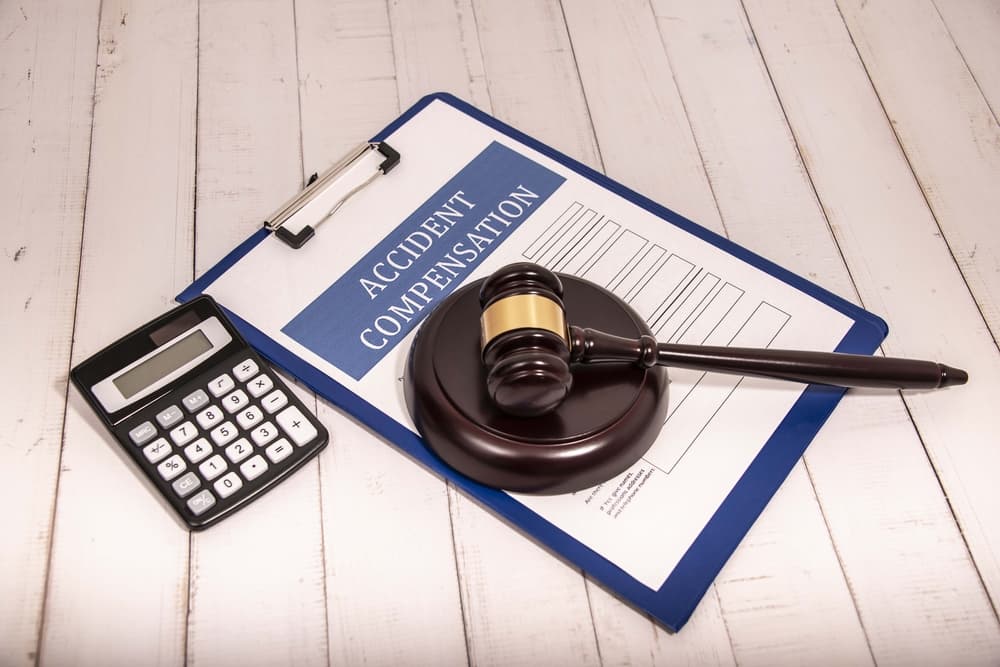Pedestrian accidents are a significant concern in urban areas like Austin, Texas, where streets and city life can sometimes create dangerous situations for those on foot. At DJC Law, we understand the complexities and nuances of personal injury law, especially when it comes to pedestrian accidents. These incidents can lead to severe injuries or, in the worst cases, fatalities.
Eliminating the common causes of pedestrian accidents can prevent many of them and ensure our community's safety. If you have been injured in pedestrian accident due to negligence of someone else, reach out a experienced pedestrian accident lawyer near you.
Common Causes of Pedestrian Accidents

Here’s a closer look at some of the most common reasons why pedestrian accidents happen:
Distracted Driving
One of the leading causes of pedestrian accidents is distracted driving. In today's fast-paced world, drivers often multitask while behind the wheel. Whether texting, adjusting the GPS, changing the music, or even eating, these distractions can lead to a momentary lapse in attention enough to miss seeing a pedestrian crossing the road.
Speeding
Speeding is another significant factor contributing to pedestrian accidents. The faster a vehicle is moving, the less time the driver has to react to a pedestrian. Additionally, accidents involving speed are more likely to result in severe injuries or fatalities due to the increased force of impact.
Failure to Yield at Crosswalks
Many pedestrian accidents occur at crosswalks when drivers fail to yield the right of way to pedestrians. Despite clear laws and signals designed to protect pedestrians in these areas, some drivers ignore these protections, leading to dangerous situations.
Poor Lighting
Accidents are more likely to happen in poorly lit areas where visibility is low. Pedestrians are harder to see at night, and if street lighting is inadequate, the risk of an accident increases significantly. Areas without proper lighting require extra caution from both drivers and pedestrians.
Alcohol and Drug Impairment
Impairment due to alcohol or drugs is a common cause of pedestrian accidents, affecting both drivers and pedestrians. Impaired judgment and reduced reaction times make it difficult for drivers to navigate safely around pedestrians.
Left-Hand Turns
Intersections are particularly dangerous for pedestrians, especially when drivers are making left-hand turns. Drivers focusing on navigating the intersection may not notice pedestrians crossing the road, leading to a higher risk of collision.
Unmarked Crosswalks
While marked crosswalks are designed to be safe for pedestrians to cross, many accidents occur at unmarked crosswalks, where drivers may not expect to encounter crossing pedestrians. These areas often lack the same safety signals and protections at marked crosswalks.
Where Do Pedestrian Accidents Usually Happen in Austin?
Certain areas in Austin tend to be more prone to pedestrian accidents due to high traffic volumes, the presence of entertainment districts, and areas with inadequate pedestrian infrastructure.
While the city works continuously to improve pedestrian safety, awareness of these areas can help residents and visitors alike navigate more cautiously. Here are some areas in Austin where pedestrian accidents might be more likely to occur:
Downtown Austin
Downtown Austin, especially around the Sixth Street Entertainment District, sees high foot traffic, especially at night and on weekends. The mix of vehicles, pedestrians, and sometimes impaired judgment can lead to accidents. Busy intersections and streets crowded with bars, restaurants, and music venues make it a hotspot for pedestrian-related incidents.
The University of Texas at Austin Campus Area
With thousands of students and faculty moving about the campus and surrounding areas, the University of Texas at Austin is a hub of pedestrian activity. Guadalupe Street, also known as "The Drag," is particularly busy, combining commercial areas with high pedestrian traffic, increasing the risk of accidents.
South Congress Avenue
South Congress Avenue is a popular destination for both locals and tourists, known for its eclectic shops, restaurants, and boutiques. The area's heavy pedestrian traffic, coupled with busy roadways, creates potential hazards for those on foot, especially in areas with limited crosswalks or during peak times.
East Austin
East Austin has undergone significant development and gentrification, leading to an increase in pedestrian traffic. However, some areas still lack sufficient pedestrian infrastructure, such as safe crosswalks and sidewalks, increasing the risk of accidents in this rapidly evolving neighborhood.
I-35 Corridor
The Interstate 35 corridor through Austin is a major thoroughfare for vehicular traffic. While not a pedestrian zone, the areas adjacent to I-35, including crossings and underpasses, can be dangerous for pedestrians trying to navigate across or alongside this busy highway.
Riverside Drive
Riverside Drive is a busy area known for its residential complexes, parks, and recreational areas along Lady Bird Lake. The mix of recreational pedestrians, cyclists, and vehicle traffic, especially during events or peak recreational times, can lead to increased incidents.
Common Pedestrian Accident Injuries

Pedestrian accidents can result in a wide range of injuries, varying in severity from minor cuts and bruises to severe, life-altering conditions and, tragically, in some cases, fatalities.
The extent of injuries often depends on several factors, including the speed of the vehicle at the time of impact, the area of the body struck, and the physical condition of the pedestrian.
Here are some common injuries that can result from pedestrian accidents:
- Soft Tissue Injuries: These include sprains, strains, and tears to muscles, tendons, and ligaments. These injuries may not be immediately apparent at the time of the accident but can cause significant pain and mobility issues.
- Cuts and Abrasions: These include cuts and abrasions from the initial impact with a vehicle or from secondary contact with the ground or other objects. While some of these injuries might be superficial, others can be deep and require medical attention to prevent infection and ensure proper healing.
- Broken Bones: Fractures are common in pedestrian accidents, ranging from simple breaks that may heal with time and immobilization to complex fractures requiring surgical intervention. Commonly affected areas include the legs, arms, ribs, and pelvis.
- Head Injuries: Head injuries, including traumatic brain injuries (TBIs), concussions, and skull fractures, are among the most severe outcomes of pedestrian accidents. The severity can vary widely, from mild concussions to severe brain damage, affecting cognitive function, physical abilities, and emotional well-being.
- Spinal Cord Injuries: Injury to the spinal cord can result from the force of the impact during a pedestrian accident, leading to partial or complete paralysis, depending on the area of the spine affected and the severity of the injury.
- Internal Injuries: The force of impact can cause internal injuries, including internal bleeding, punctured lungs, and damage to internal organs like the liver, kidneys, or spleen. These injuries can be life-threatening and require immediate medical attention.
- Psychological Injuries: The trauma of being involved in a pedestrian accident can lead to psychological injuries, including post-traumatic stress disorder (PTSD), anxiety, depression, and other emotional and mental health issues.
- Fatalities: Unfortunately, pedestrian accidents can also result in fatalities. Pedestrians have very little protection in collisions with vehicles, making them highly vulnerable to fatal injuries. The risk of fatality increases with the speed of the vehicle at the time of impact and other factors such as the location of the impact on the pedestrian's body.
A pedestrian accident can leave the victims and their families physically, emotionally, and financially devastated. If you or a loved one was in a pedestrian accident, legal assistance can navigate the complexities of personal injury claims and secure the compensation necessary for recovery and rehabilitation.
What Can I Do If I or a Loved One Suffered Injuries in a Pedestrian Accident?

Filing an insurance claim or a pedestrian accident lawsuit after a pedestrian accident is a critical step for victims and their family members, serving as a pathway to obtaining the necessary financial resources for recovery and rehabilitation.
When a pedestrian is struck by a vehicle, they can face extensive medical treatments, rehabilitation services, loss of income due to inability to work, and, in many cases, long-term or permanent changes to their quality of life. The profound emotional and psychological impacts can affect not just the victim but their entire family. A successful pedestrian accident case can cover these expenses and losses, alleviating the financial burden and allowing the victim and their family to focus on recovery rather than financial distress.
Beyond the immediate financial relief, filing a pedestrian accident claim can also serve as a means of achieving justice and holding the responsible party accountable for their actions.
It can prompt changes in behavior, such as encouraging drivers to exercise greater caution, and can lead to broader systemic changes, such as the implementation of safer road designs or more stringent traffic laws, thereby contributing to the overall safety of the community.
For families who have lost a loved one in a pedestrian accident, a wrongful death claim can provide compensation for their loss, support for future needs, and a sense of closure by acknowledging the wrongdoing that led to their loss.
In short, filing a claim offers a dual benefit: it provides necessary support and compensation to those directly affected by the accident and serves as a catalyst for changes that can prevent future accidents. Legal action reinforces the message that pedestrian safety is of paramount importance and that negligence or recklessness on the roads will not be tolerated.
Do I Have a Pedestrian Accident Case?
Negligence in the context of a personal injury case refers to a situation where one party's failure to act with reasonable care results in harm or injury to another party. It is a foundational concept in personal injury law, including pedestrian accident cases, that helps determine liability and compensation.
To have a successful pedestrian accident case based on negligence, the plaintiff (the injured party) must establish four critical elements:
1. Duty of Care
The first element involves establishing that the defendant (the party allegedly at fault) owed a duty of care to the plaintiff. In the context of pedestrian accidents, this typically means that the driver of a vehicle has a responsibility to operate the vehicle in a manner that is safe and avoids harm to pedestrians. Every driver inherently owes this duty to all other road users, including pedestrians, as part of the rules of the road and traffic laws.
2. Breach of Duty
The second element requires demonstrating that the defendant breached their duty of care. A breach occurs when the defendant fails to act as a reasonably prudent person would under similar circumstances.
Examples of breaching this duty might include speeding, driving under the influence of alcohol or drugs, running a red light, or any other form of reckless or careless driving that puts pedestrians at risk.
3. Causation
The third element, causation, involves showing that the defendant's breach of duty directly caused the plaintiff's injuries. This means that the accident (and the resulting injuries) would not have occurred if not for the defendant's negligent behavior.
You need a lawyer who can establish a clear and direct link between the breach of duty and the harm you suffered. This can sometimes involve complex arguments, especially if there are pre-existing conditions or if the incident involves multiple parties.
4. Damages
Finally, the plaintiff must prove that they suffered actual damages due to the accident. Damages can include physical injuries, emotional distress, medical expenses, lost wages or income, and any other losses attributable to the accident. Damages in a negligence case compensate the injured party for their losses and, to the extent possible, restore them to the position they were in before the accident occurred.
Injured in a Pedestrian Accident? Contact a Pedestrian Accident Lawyer at DJC Law Today.

Pedestrian safety is a critical concern in Austin and other cities. At DJC Law, we are committed to helping victims of pedestrian accidents navigate the complex legal landscape to secure the compensation they deserve.
If you or a loved one suffered injuries in a pedestrian accident, don't hesitate to reach out to DJC Law for expert legal advice and representation. Together, we can take the necessary steps to protect your rights and advocate for a safer future for all pedestrians. Contact our Texas personal injury attorneys today at (512) 888-9999 or through our online form for your free consultation and to discuss your legal options.